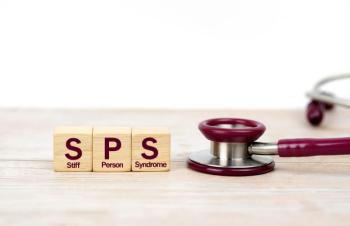
Naloxone dispensing, education for pharmacists available in new guide from CPNP
Naloxone is a lifesaving antidote for reversing opioid overdose symptoms and the pharmacist’s role has quickly expanded in managing this population. NALOXONE ACCESS: A Practical Guideline for Pharmacists is designed to educate pharmacists on naloxone use and administration with the goal of providing increased patient access to this life-saving medication for opioid overdose.
Naloxone is a lifesaving antidote for reversing opioid overdose symptoms and the pharmacist’s role has quickly expanded in managing this population.
DiPaulaA new guide from the
Health and Human Services (HHS) recently launched a
Related:
“This guide was created because the pharmacist role in preventing and treating opioid overdose has expanded rapidly,” said Bethany DiPaula, PharmD, BCPP, associate professor,
Pharmacists now dispense naloxone in community and hospital settings and, in some states, order naloxone directly for patients under standing orders or collaborative practice agreements, according to DiPaula.
Within this guide, pharmacists will gain information on the following:
- Patient Selection
- How Naloxone is Supplied
- Prescribing and Dispensing
- Acquisition and Reimbursement
- Storage
- Supporting Laws and Regulations
- Frequently Asked Questions (FAQs)
- Patient Information Sheets for both Intranasal and Intramuscular Administration of Naloxone
Related:
“Opioid use disorder and opioid overdose are enormous issues in the United States,” Dr DiPaula said. “Many of these patients start by receiving narcotics for pain management. However, they eventually become addicted. It is important for managed care and hospital formulary managers to understand about preventions as well as signs of opioid overdose and proper treatment as many of their patients may be at risk.”
Related:
Dr DiPaula offers 4 important take-aways:
- Naloxone should be considered for all patients exposed to opioids regardless of the source.
- Naloxone is generally a bystander administered medication. Consequently, there are unique legal issues.
- Naloxone for take-home use can be supplied as an intramuscular (IM) injection or as an intranasal (IN) spray.
- The single-dose vial, prefilled syringe, and IM syringes are available from pharmacy wholesale distributors. The atomizers for IN administration are available from medical supply vendors, and in some cases, can be purchased directly from the pharmacy wholesaler, or obtained from point persons within the pharmacy corporation.
Newsletter
Get the latest industry news, event updates, and more from Managed healthcare Executive.


















































